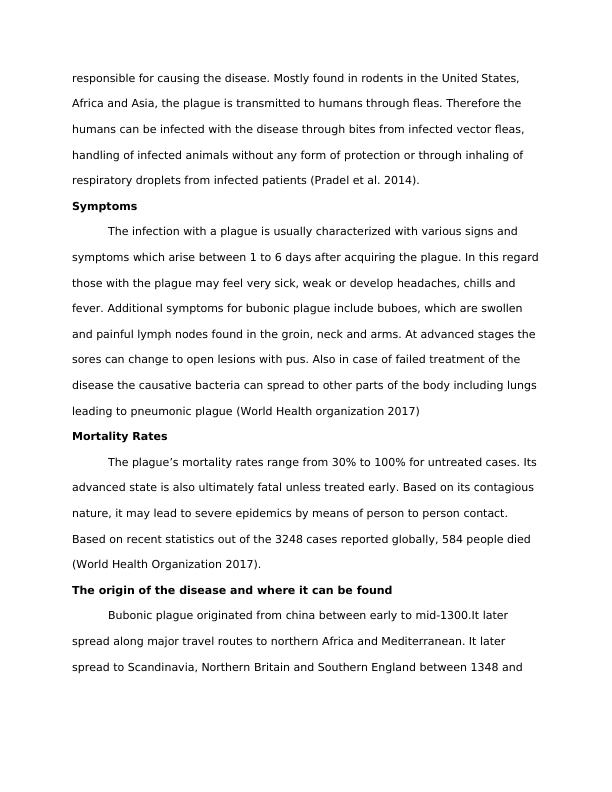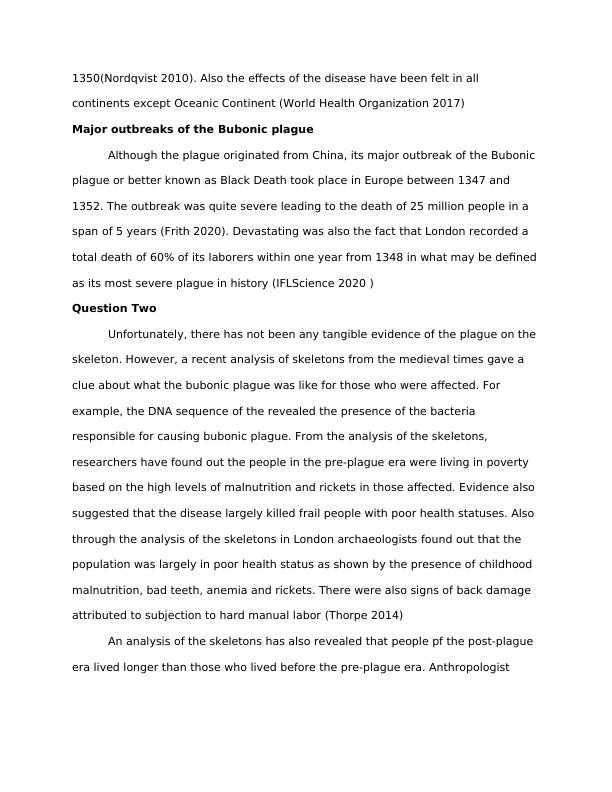World Health Organization 2017 Plague
Conduct a short review of one article from a scholarly journal by creating a reverse outline of the article and summarizing the main themes and conclusions in a written review.
7 Pages1567 Words23 Views
Added on 2022-09-18
World Health Organization 2017 Plague
Conduct a short review of one article from a scholarly journal by creating a reverse outline of the article and summarizing the main themes and conclusions in a written review.
Added on 2022-09-18
ShareRelated Documents
End of preview
Want to access all the pages? Upload your documents or become a member.
Black Death: Symptoms, Transmission, and Treatment
|6
|1179
|106
The History of Plague - Black Death
|5
|1694
|141
Plague and People
|6
|1381
|236
Understanding Chain of Infection and Modes of Transmission in Workplace
|1
|1926
|494
Diseases Ddrugs And Complications
|13
|3883
|23
Infectious Disease: Nature, Transmission, and Prevention
|19
|3419
|39



